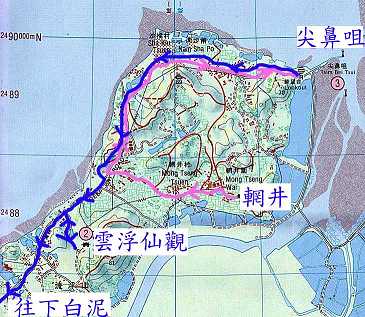On 9 December 2000, we had a fantastic bird watching trip at Tsim Bei Tsui. Though we all got burnt by the sun, we all enjoyed the trip very much. We found over 30 species of birds within the 5-hour walk.
| Great Egret | Moorhen | Red Shanker | Plain Prinia | Yellow-breasted Bunting |
| Little Egret | Black-eared Kite | Tree Sparrow | Spotted Dove | Magpie |
| Chinese Pond Heron | Bazzard | Black Drongo | Common Kingfisher | Magpie Robin |
| Grey Heron | Black-necked Starling | Crested Myna | White-breasted Kingfisher | Daurian Redstart |
| Black Faced Spoonbill | Little Ringed Plover | Collared Crow | Black-capped Kingfisher | Feral Pigeon |
| Wigeon | Greater Sandplover | Rufous-black Shrike | White Wagtail | Black-faced Laughing Thrush |
| Chinese Bulbul | Common Sandpiper | Cormorant |
(Acknowledgement: Thanks Peter for counting)
Tsim Bei Tsui is an ideal place for watching wetland birds. Typically, we found Little Egret, Great Egret, Cormorant, Grey Heron, Sandpiper and etc.....
 |
Little
Egret
(Extracted from HKNature.Net) |
 |
Cormorant
(Extracted from HKNature.Net) |
In Tsim Bei Tsui, we also found the beautiful kingfishers. Under the bright sunlight, they appeared even much sharper and more eye-catching. We all feel excited when spotted them.
|
|
|
| Common Kingfisher |
Black-Capped Kingfisher
|

